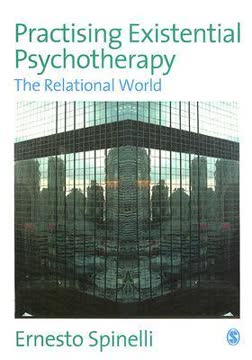Key Takeaways
1. Existential Therapy's Core: Three Foundational Principles
Purely objective truth is nowhere to be found . . . . The trail of the human serpent is thus over everything.
Inter-relational existence. Existential psychotherapy is fundamentally rooted in three philosophical principles that challenge conventional Western thought. First, Relatedness posits that all understanding of ourselves, others, and the world emerges from an irreducible inter-relational grounding. This means we cannot comprehend human beings in isolation, but only through their connections, subverting the traditional subject-object split.
Uncertainty is a given. Second, Existential Uncertainty highlights that if all experience is inter-relationally derived, then all our reflections are inherently incomplete and open-ended. Uncertainty is not an occasional anomaly but a constant, paradoxical given of human existence, challenging any notion of a harmonious, complete truth. This principle suggests that life's inherent lack of completeness is an inescapable aspect of being.
Anxiety is inevitable. Third, Existential Anxiety describes the inevitable unease or discomfort that accompanies this inherent uncertainty. It's not a pathology to be eliminated, but a fundamental "given" of human existence. Anxiety can be a source of creativity and vitality, or it can drive us to rigid "inauthentic" attempts to deny or avoid uncertainty, leading to symptoms and distress.
2. The Worldview: Our Structured Interpretation of Being
The objective world simply is, it does not happen. Only to the gaze of my consciousness, crawling upward along the line of my body, does a section of this world come to life as a fleeting image in space which continuously changes in time.
Structuring "worlding." Our experience of being is a continuous, ever-shifting process called "worlding." However, to make sense of this fluid reality, we inevitably impose structural limitations, creating what is termed the "worldview." This worldview is a selective, biased reflection of worlding, acting as our personal strategy for navigating relatedness, uncertainty, and anxiety.
Core constructs. The worldview is comprised of three primary sub-structures:
- Self-construct: Our beliefs, values, and attitudes about "self" or "I."
- Other-construct: Our stances regarding specific "others" or "others" in general.
- World-construct: Our views on the physical, social, cultural, and spiritual dimensions of "the world."
These constructs are not isolated but are deeply inter-related, shaping how we perceive and interact with existence.
Dissonance is inherent. Because the worldview is a structure attempting to capture a process, a fundamental dissonance between worlding and the worldview is inevitable. This gap is the source of many human dilemmas and disturbances. Existential therapy aims to clarify this dissonance, helping clients understand how their worldview distorts or inadequately reflects their direct experience of worlding.
3. Therapy as a Co-Created "Therapy World"
Nothing is more dangerous than a dogmatic worldview – nothing more constraining, more blinding to innovation, more destructive of openness to novelty.
A unique space. Existential psychotherapy operates within a "therapy world," a temporary, co-created space with its own unique rules and boundaries. This distinct environment allows clients to explore their worldview in a novel context, comparing it to their experiences in the "wider world." The therapist's role is to help establish and maintain this unique setting.
"Magic feathers." The specific conditions of the therapy world—such as session length, frequency, location, and fees—are often based on "magic feathers." These are beliefs or rituals that, while not inherently necessary, are invested with significance by the participants, enabling them to believe in and engage with the therapeutic process. The therapist must clarify and adhere to these agreed-upon conditions to build trust.
Trust through consistency. The true value of the therapeutic contract lies not in its specific stipulations, but in the therapist's consistent adherence to them. This demonstrates trustworthiness, providing a secure, if temporary, relational foundation. This consistency offers a stark contrast to the often unpredictable and unreliable nature of relationships in the wider world, allowing the client to experience a new form of relational stability.
4. Phase One: Building Trust Through "Un-knowing" and Descriptive Inquiry
To know what you do not know is best. To not know of knowing is a disease.
Therapist's receptive stance. Phase One focuses on co-creating the therapy world and establishing a foundation of trust. The therapist adopts an attitude of "un-knowing," which is a profound receptivity and descriptive curiosity towards the client's worldview. This involves suspending personal biases, assumptions, and expectations, treating the client's narrative as novel and unique.
Phenomenological method. This "un-knowing" is operationalized through the phenomenological method, which includes:
- Epoché (bracketing): Setting aside personal biases and assumptions.
- Description: Focusing on "what" and "how" the client experiences, rather than "why."
- Horizontalisation: Temporarily equalizing the significance of all descriptive elements.
This method ensures that the therapist remains attuned to the client's lived experience without imposing external interpretations or judgments.
Acceptance and curiosity. The therapist's "un-knowing" is expressed through:
- Acceptance: Respecting the client's right to be as they are, challenging perfectionism in both client and therapist.
- Curiosity: An inquisitive, playful stance that explores the client's world without directing change.
This approach fosters a non-judgmental environment where the client feels truly heard and validated, often for the first time, which can profoundly challenge their existing worldview.
5. Phase Two: Deepening Exploration via Challenging "Otherness" and Immediacy
The analyst must change at some point from the consoler who takes the part of the patient against the world to the person who puts before the patient the claim of the world.
Asserting "otherness." In Phase Two, the therapist shifts from primarily attuning to the client's worldview to asserting their own "otherness." Having established trust in Phase One, the therapist now uses their distinct perspective to challenge the client's implicit dispositional stances. This involves engaging in dialogue from the therapist's "self" perspective, while simultaneously acknowledging the client's "other" perspective.
Exploring implicit meanings. Listening and challenging in Phase Two encourage the client to explore what remains implicit or unstated in their narrative. This involves:
- Shifts between particular and general: Moving from specific experiences to broader patterns and vice versa.
- Shifts from explicit to implicit: Uncovering underlying, unstated beliefs and values.
- Therapist's "self-as-other": Using the therapist's own experience to clarify and challenge the client's worldview, always with an invitational and tentative approach.
Inter-relational realms. Phase Two emphasizes the immediacy of the therapeutic encounter through three inter-relational realms:
- I-focused: "What I tell myself about being me in this encounter."
- You-focused: "What I tell myself about my experience of you, and your experience of me."
- We-focused: "What I tell myself about us being in relation right now."
The explicit focus on the "We-focused" realm helps clients confront their relational patterns directly within the safety of the therapy world.
6. Dreams and Intimacy: Pathways to Worldview Exploration
They are not puzzles to be solved but openings to be attended to.
Dreams as lived reality. Existential therapy views dreams not as disguised symbols requiring interpretation, but as a form of lived reality—a "dream world" that offers direct access to the dreamer's experience. Dreams use the dreamer's private language to express issues and concerns, providing a unique bridge between the dream world and waking life.
Descriptive dream work. Working with dreams involves:
- Recounting the dream in the client's own way.
- Contextualizing dream elements (spatial, temporal, objects, dreamer's role).
- Repeating the dream in the present tense, often with the therapist mirroring.
- Exploring inter-relational dream elements and their dispositional stances.
This process allows clients to explore challenging issues from a partially dissociated perspective, making difficult "waking life" worldview challenges more accessible.
Intimacy and disclosure. The intense focus on the immediate relationship in Phase Two often leads to deep intimacy, including general or even erotic attraction. Existential therapy acknowledges these feelings as present in the relationship, rather than denying or pathologizing them. Therapist disclosures (covert or overt) can be powerful tools, when used tentatively and invitationally, to:
- Clarify the client's worldview.
- Promote We-focused discourse.
- Model acceptance of complex emotions.
7. The "They-Focus": Bridging Therapy to the Wider World
In willing freedom we discover it depends entirely on the freedom of others and that the freedom of others depends on ours . . . . I can take my freedom as a goal only if I take the freedom of others as a goal as well.
Beyond the dyad. Phase Three introduces the "They-focused" realm of encounter, which explicitly acknowledges the unavoidable impact of the wider world on the client's choices and experiences. This challenges the common psychotherapeutic tendency to isolate the client's subjective experience, reminding them that no act or decision exists in a vacuum.
Inter-relational impact. The "They-focus" prompts clients to consider:
- How their decisions impact the self-constructs of significant others.
- How their actions affect the relationships between those others.
- How their choices influence others' relations to the wider world.
This inquiry highlights the complex, often unpredictable, consequences of personal choices within an indissoluble matrix of relations, fostering a sense of inter-relational responsibility.
Acknowledging reality. The therapist's role is not to prevent the client's decisions or impose a moral stance, but to ensure that the client acknowledges the broader inter-relational context. This means accepting that others may not agree with or benefit from the client's choices, and that the client's freedom is always situated within these wider realities. This perspective deepens the client's understanding of their choices, freedom, and responsibility.
8. Endings: Embracing Uncertainty and the Dissolution of the Therapy World
If my devils are to leave me, I am afraid my angels will take flight as well.
Diverse forms of ending. Existential psychotherapy recognizes that endings, like beginnings, are diverse and not necessarily planned or predictable. There is no single "correct" way to end therapy; whether an ending is pre-arranged, spontaneous, or even abrupt, it is still an ending. The focus shifts from how it ends to the client's openness to whatever form the ending takes.
"Winding down" as Dumbo effect. The common practice of a "winding down" period is often a "magic feather" for both therapist and client, providing a sense of control and predictability. While desirable, the true challenge lies in embracing the uncertainty inherent in the dissolution of the therapy world. This process allows clients to confront the anguish of knowing that some liberating possibilities experienced in therapy may not fully translate to the wider world.
Life after therapy. Post-therapeutic contact, such as establishing a new therapeutic relationship or friendship, is possible but comes with its own complexities and ethical considerations. A new therapeutic relationship requires a fresh start, while friendship often means sacrificing the possibility of future therapy. The ultimate aim is for clients to embrace the inherent possibilities and regrets in all chosen ways of relatedness, allowing the dialogue of life to find its own way of ending.
9. Existential Therapy: A Human Science of "Being," Not "Doing"
All forms of therapy entrust their practitioners with an ‘awe-ful’ responsibility. This responsibility is not merely professional, containing within it ethical codes of conduct and the ability to apply learned skills in an appropriate and respectful manner. More than this, such responsibility lies in a set of moral principles which each therapist seeks to convey in an embodied fashion – that is to say, through his or her very way of being with (and for) the client who is present.
Critique of the "expert" model. Existential psychotherapy fundamentally challenges the dominant Western model of therapy, which often positions the therapist as an expert applying techniques to a detached client. This traditional approach, rooted in natural science, prioritizes "doing" (skills, interventions) over the therapist's "being" (presence, relational qualities). Existential therapy argues that this "technologization" distorts the therapeutic relationship and its potential.
Human science approach. Instead, existential therapy aligns with a Human Science approach, focusing on understanding rather than mere explanation. It views the client as an open-ended being, rejecting categorization and reductionist labels. The therapist's primary role is to engage in a descriptive, collaborative investigation of the client's lived worldview, acknowledging the mutual influence within the therapeutic encounter.
Embodied moral stance. The therapist's "being qualities"—such as acceptance, curiosity, and willingness to confront uncertainty—are the core "tools" of existential therapy. These qualities are not just techniques but an embodied moral stance, demonstrating a way of relating that is respectful, non-judgmental, and genuinely open to the client's unique existence. This emphasis on the therapist's authentic presence is what truly distinguishes the existential approach.
10. Relational Constructs: Expanding Therapy to Couples and Groups
The group is the therapist of the group.
Beyond the individual. Existential psychotherapy extends its principles to couples and groups, recognizing that relationships themselves form distinct "constructs" with their own worldviews. In couple therapy, the focus is not just on two individuals, but on the "couple-construct"—a unique entity co-constructed by the partners. This construct has its own sedimentations, dissociations, and presenting conflicts, often rooted in unstated dispositional stances.
Couple therapy dynamics. Key aspects of existential couple therapy include:
- Couple-construct clarification: Making explicit the shared, often implicit, beliefs and patterns that define the relationship.
- Conflict as expression: Understanding conflict as a manifestation of the couple-construct's limitations or attempts to maintain itself.
- Multi-perspective focus: The therapist attends to each partner's worldview, the couple-construct, and the inter-relations between them.
- Structured sessions: Often involves a sequence of joint and individual sessions to explore both shared and private experiences of the couple-construct.
Group as therapist. In existential group psychotherapy, the group itself is considered the primary therapeutic agent. The therapist is a member, facilitating the clarification of relational and communicative disturbances within the group. The group-construct, with its inherent inter-relational complexity, becomes the focus of investigation. This approach provides a structured environment that mirrors the wider world's relational challenges, allowing members to explore their worldviews in a dynamic, multi-faceted context.
Last updated:
Review Summary
Practising Existential Psychotherapy receives high praise from readers, with an average rating of 4.24/5. Reviewers appreciate Spinelli's approach to describing the client's worldview through existential principles. The book is lauded for its guidance in expanding descriptive fields and methods in therapy. Readers find it helpful for practicing existential psychotherapy, though some parts are challenging. Spinelli's ability to explain complex topics clearly and poetically is highlighted. The concept of "un-knowing" is particularly noteworthy, and many intend to reread for deeper understanding.
Similar Books
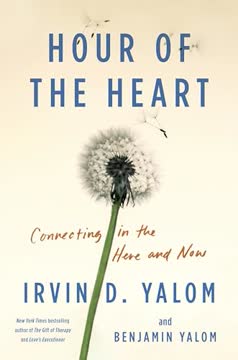
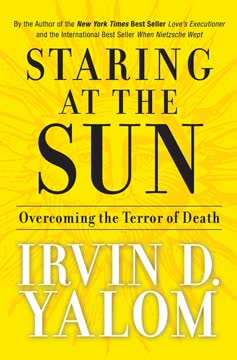
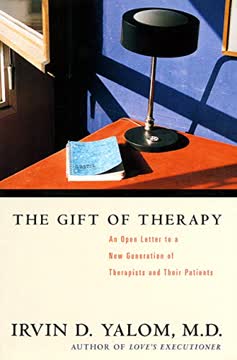
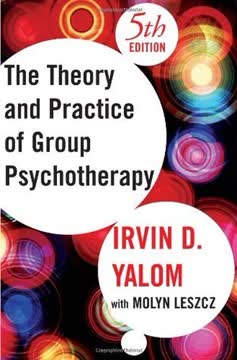
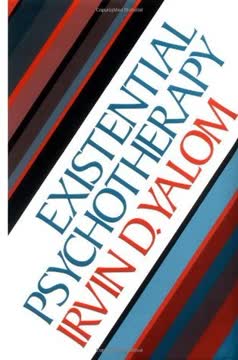

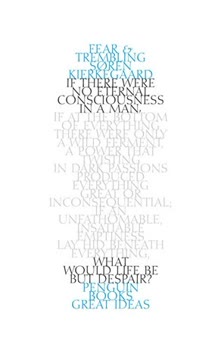
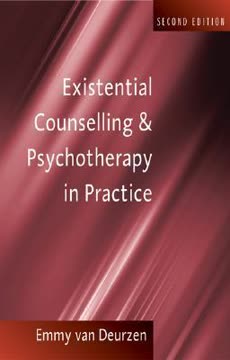
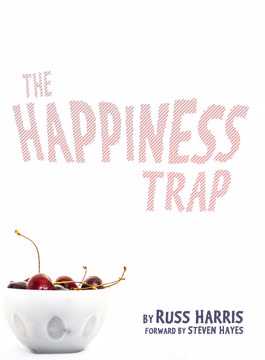

Download PDF
Download EPUB
.epub digital book format is ideal for reading ebooks on phones, tablets, and e-readers.
